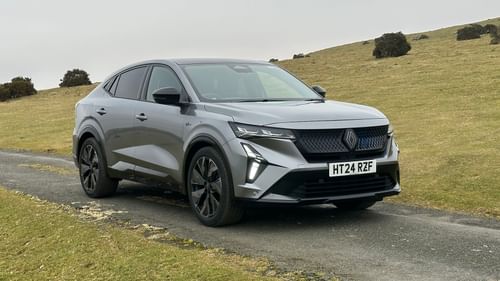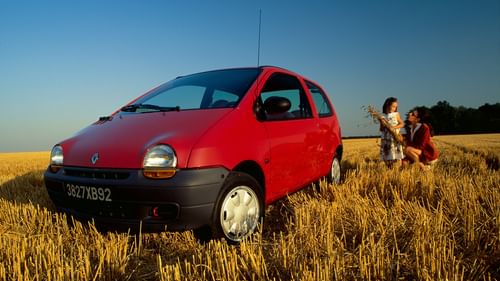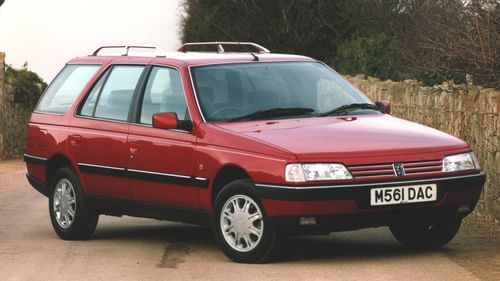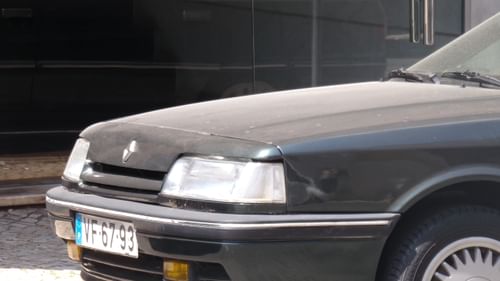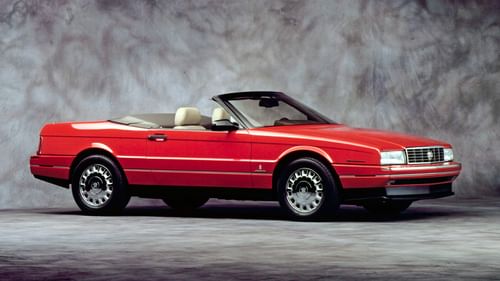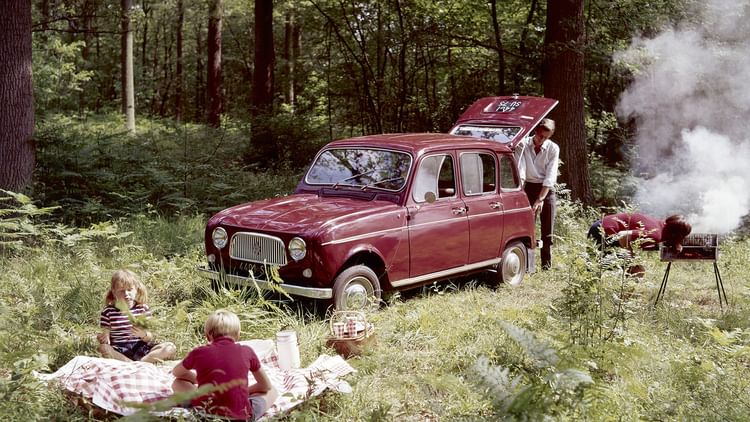
Describing the Renault 4 as a car with character is a little like saying your washing machine has soul. Passion, style and flair aren’t words you’d readily associate with the design and construction of the ‘Quatrelle’. This was a car developed under the workmanlike pillars of efficiency, versatility and cheapness.
As Autocar put it in 1972: ‘This car has few pretensions as a status symbol, its performance is marginal, and it is obvious that no artistic stylist spent sleepless nights pondering on this venture. It is of strictly utilitarian design, and is intended as a purely basic and functional means of transport with first and maintenance costs very much at the fore.’ Passion? It’d be more exciting watching your smalls on a spin dry in the Hotpoint.
So why, then, did the Renault 4 go on to become one of the most characterful cars in the world? It wasn’t designed to be loveable, chic or desirable. Pierre Dreyfus, the head of Renault, reportedly told his team to make the car less ugly than the Citroën 2CV, but not nearly as appealing as the Renault Dauphine. A five out of ten car – one that would look attractive after a few glasses of Pernod.
It’s probably no coincidence that it’s the most basic cars that seem to get under our skin. Volkswagen Beetle, Morris Minor, Mini, Fiat Panda, Renault Twingo Mk1 and Land Rover (Series and Defender). Cars that become part of the family. Cars with faces, whether by accident or design. In his book From Ford to Renault: 40 Years in the Footsteps of Patrick le Quément, Serge Bellu explains how the designer attempted to decode the design of the Twingo for the chairman and CEO, Raymond Lévy. The car ‘should be perceived as being a family pet, which you want to scoop up and place in front of the fire’. You might not want to stick a Renault 4 in front of the wood burning stove, but it would be perfect for carrying the dog to the rug in front of the fire. The inside was so commodious, you could move heaven and hearth.
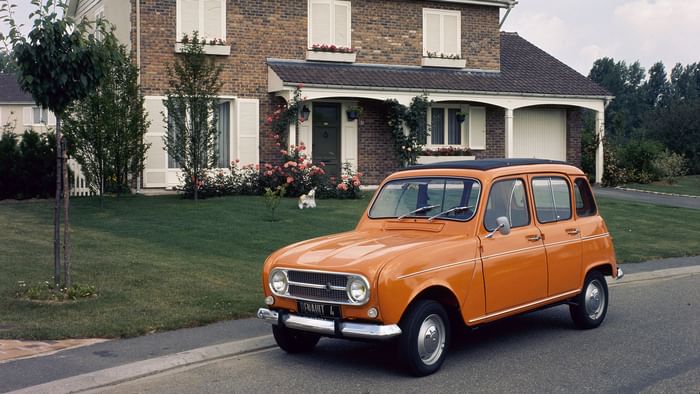
The Renault 4 worked because it was basic by design. ‘The car must no longer be just a few seats and a boot. Give me volume,‘ Dreyfus told his head of design, Yves Georges. Renault had seen volume of a different kind from the 4CV, the people’s car dating back to 1947 that had made the state-owned company the biggest-selling car manufacturer in France. The Dauphine, for all its qualities, had failed to replace the 4CV, while the Frégate was too large and expensive to meet Dreyfus’ vision of a utility car. ‘Cars should no longer be chairs and a suitcase,‘ he told Georges. ‘Make me a space.’ Renault had identified a need for three cars: a saloon car for the masses, a semi-utilitarian model and a utilitarian model. There was early talk of a platform with interchangeable bodies – a kind of ‘Mr Benn’ approach to motoring. Drive into the showroom with a four-seater saloon car, then drive out with a two-seater van. The same platform with a different body. Renault even considered enabling customers to have entire automotive ‘wardrobes’ in their garages. It was against this background that the Renault 4 was born.
Dreyfus, who was appointed head of Renault in 1955, a year before the launch of the Dauphine, was struck by how Renault appeared to build cars for city dwellers, leaving Citroën to make hay in the countryside. Renault needed a 2CV of its own, but Dreyfus anticipated the end of city cars being dramatically different from country cars. The ‘tin snail’ may have had a 13-year head start, but the Renault 4 was set to catch and pass its French rival. It would do so by targeting a new breed of suburbanites with a so-called ‘blue jeans car’. Originally work trousers in the USA, jeans had become a popular item of unisex clothing across the world, being both hard-wearing and fashionable. ‘You can wear in any situation, if you’re not concerned about snobbery or social conformity,’ Dreyfus explained. ‘[An item] that serves every purpose, can be taken everywhere, is inexpensive and can be taken on and off without making you feel disoriented.’ As at home outside a café in the suburbs as they were working on a farm in the countryside.
Project 350, so-called because the price of the car was set at 350,000 francs, resulted in a front-wheel drive car with a flat floor, four doors and a large ‘service door’ at the back. Cost prohibited the use of switchable bodies, while the idea of a two-door car was dropped due to a perceived lack of demand. The Renault 4 – widely referred to today as the 4L – was the company’s second front-wheel drive car after the Estafette van and one of the world’s first hatchbacks. Meanwhile, Renault opted for independent torsion bar suspension to deal with France’s notoriously poor rural roads. As Autocar put it in 1963, the suspension could ‘cope with ploughed field and boulevard alike’. With no lubrication points on the suspension, and a sealed cooling system with an expansion chamber (a Renault first), owners could be assured of reduced maintenance and costs. Some 1.8 million miles were completed during testing, with prototypes dispatched across the world, including Minnesota, Sardinia and the Sahara. The aim was to identify the breaking points of the Renault 4, which is why the car made such a formidable companion in endurance rallies and on events like the 4L Trophy. A Renault 4 Sinpar 4x4 even finished fifth overall (and second on the list of cars behind a Range Rover) in the 1979 Paris-Dakar rally. This earned the drivers Claude and Bernard Marreau the nickname of ‘the Desert Foxes’, and they finished third behind a pair of Volkswagen Iltis in 1980. Four years earlier, Michèle Ray, Elaine Lucotte, Betty Gérard and Martine Libersat had famously completed a gruelling 40,000km journey from Ushuaia in Tierra del Fuego to Anchorage in Alaska in a pair of front-wheel drive Renault 4s. It took four and a half months to conquer the entire continent of America, but the journey demonstrated the Renault’s off-road ability and ease of maintenance, while positioning the car as a female-friendly vehicle. This was a crucial point, with Renault recognising that women were playing an increasing role in the purchase of vehicles, with the number of driving licences beginning to even out between the sexes. This led to the creation of the Renault 4 Parisienne, launched in association with Elle magazine. The ‘Elle prend le volant’ (‘She’s in the driving seat’) campaign gave female drivers 48 hours to test the car, which was dressed in a canework or tartan outfit. The special edition was on sale from 1963 until 1968.

One could argue that the Parisienne strayed from the original brief from Pierre Dreyfus, but it highlights the way in which the French took the Renault 4 to their hearts. A total of 8,135,424 were built worldwide, with the car produced in 28 countries and sold in more than 100. This made it the biggest-selling French car in the world, until the 4 was overtaken by the Peugeot 206, which remains in production today. Autocar was seemingly uncertain about the car’s potential in the UK, when its road test in 1962 reached its conclusion by saying: ‘However, to say that it would sell well in the United Kingdom would perhaps be the remark of a real optimist.’ French production ended in 1992, but the Renault 4 lived on until 1994 in Slovenia and Morocco. In Europe, the Renault 4 was dispatched from the Billancourt factory as completed cars, while destinations further afield received the car in CKD (completely knocked down) form. For every 10 cars sold, six were sold and five assembled outside France, highlighting the Renault 4’s credentials as a genuine ‘world car’. Regional nicknames were commonplace, such as ‘Frog’ in Italy, ‘Katcra‘ in Yugoslavia and ‘Oui-oui’ in Southern Rhodesia. In Finland, it was called the rather adorable ‘Tiparellu‘, or ‘droplet’. In 2013, Pope Francis was given a 20-year-old Renault 4 as a gift to drive himself around Vatican City. The Pope said he used to drive the same car in his native Argentina, where it was known as the ‘El Correcaminos’, or ‘road/path runner’. Forget a celebrity endorsement, the Renault 4 comes with the blessings of the pontiff.
Not that it needed it. Launched as three models at the 1961 Paris motor show, the Renault 4 was an instant hit. The R3 was a scaled-back, budget version, with a 603cc engine, painted tubular bumpers, four side windows, a single sun visor and no hubcaps. It was short-lived, with production ending in September 1962. The mid-range R4 was identical in appearance, with power soured from a 747cc engine, while the R4L got the same power unit but six side windows, chrome trim and an ashtray. A 300kg payload van was added to the range shortly after the Paris show. The trim was identical to the R3 and R4 models, with the option of a hinged roof flap dubbed the ‘Girafon‘, or ‘giraffe flap’. In all cases, the front windows slid forward rather than down, with the entire range using a three-speed gearbox.
Renault’s innovation extended beyond the basic car. A huge promotional campaign was organised on the streets of Paris, with a fleet of 200 Renault 4s made available for motorists wanting to take a test drive. Named ‘Prenez le Volant’ (Take the Wheel), the event enabled pedestrians to flag down the passing cars and, well, take the wheel for a few miles. Some 60,000 Parisians did just that, laying the foundations for the Renault 4 to become France’s best-selling model. Production hit the 500,000 mark in 1964, before sales topped a million in February 1966. Amazingly, it took just a decade for sales to hit the 3.5 million mark.
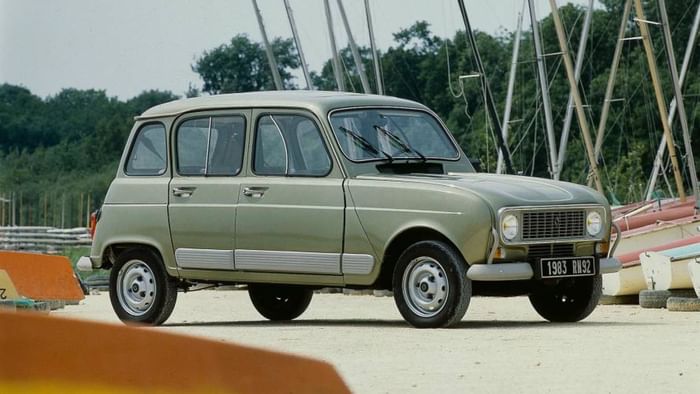
Not everything about the Renault 4 was a success. The R3, which was never offered in the UK, took basic to the extreme, with no fuel gauge and a miserable grey paintwork. Just 2571 were built before Renault abandoned the most austere model. Its demise coincided with the arrival of the ‘super comfort’ Renault 4 Super. Highlights included a new fold-down rear tailgate with drop window, chrome-plate dual-tube bumpers and a more powerful version of the 747cc engine. Later that year, the Super gained the 845cc engine from the Dauphine.
Development continued throughout the 1960s. In 1963, hinges replaced the antiquated rod design for propping up the tailgate, the R4 Super was dropped in favour of the R4L Super, while the stylish Parisienne hit the catwalk. A new glazed version of the van arrived in 1964, before the R4 name gave way to Renault 4 branding in 1965. A four-speed gearbox and new radiator grille arrived in 1967, before the Sinpar-built Plein Air took to the beach in 1968. There were hundreds of tweaks and changes: front seat belts were fitted from 1970, the Citroën Méhari-rivalling Rodeo coming in 1971, and the third radiator grille debuting in September 1974. There was even a Renault 4 pick-up, which used the platform of the longer F6 van. Dreyfus’ vision for a car for all seasons was complete: saloon, van, beach buggy, 4x4 and pick-up.
The most significant development, certainly in the car’s later life, was the launch of the 4 GTL in 1978. This featured the 1108cc engine from the Renault 8 to ensure the Renault 4 could power its way through the 1980s. The GTL, which is the most common variant in the UK, is easy to spot thanks to the plastic cladding on the side, grey grille and bumpers, and protective crossovers on the front. Sliding glass was added to the rear windows, so your children no longer felt like a pair of tomatoes in a greenhouse on a hot journey to the coast.
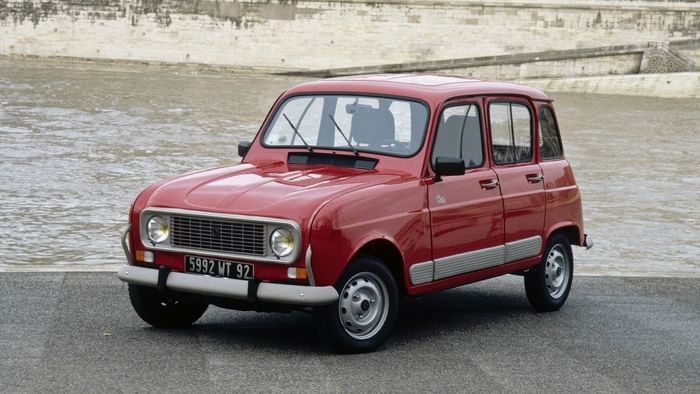
The GTL, along with a series of special editions, kept the Renault 4 alive in the 1980s. Annual sales, which had consistently topped 200,000 throughout the 1960s and 1970s, fell in the early ‘80s, before failing to hit 100,000 for the first time in 1986. Interest was maintained via the Safari, Jogging, Sixties, Savane, Clan and Cartes Jeunes editions, before the end of production was marked by the launch of the Renault 4 Bye-Bye, of which 1000 were built for the French market in 1992. Little could stop a Renault 4 on the move, but the ‘Quatrelle’ was eventually forced off the road by safety and environmental legislation. It had no direct replacement, with budget-conscious Renault customers forced to choose between the Twingo and R5 Campus. But then, how do you replace an icon?
The Renault 4 deserves to be held aloft as one of the most significant cars of the 20th century. Classless yet classy, and as eager, dependable and reliable as the family Labrador, it helped to mobilise an entire nation while conquering the world. Pierre Dreyfus’ jeans analogy lives on today. The paintwork might be faded, the upholstery a little frayed around the edges, but the 4 looks as good in 2025 as it did in 1961. As Yves Saint Laurent nearly said, fashions fade, the Renault 4 is eternal.
This article first appeared in issue 3 of Classic.Retro.Modern. magazine.
